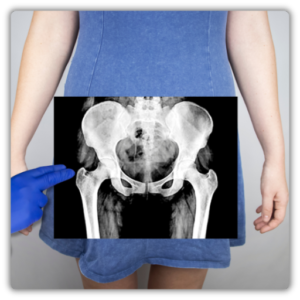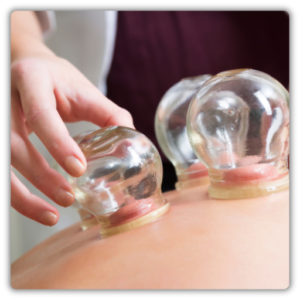What is Chronic Pelvic Pain?
 Chronic pelvic pain is a common condition in which pain in the lower pelvic area lasts for six months or longer. It can cause pelvic pain that comes and goes, affecting the pelvic organs and reproductive organs. Pain can be caused by various factors, including pelvic inflammatory disease and issues with the pelvic floor.
Chronic pelvic pain is a common condition in which pain in the lower pelvic area lasts for six months or longer. It can cause pelvic pain that comes and goes, affecting the pelvic organs and reproductive organs. Pain can be caused by various factors, including pelvic inflammatory disease and issues with the pelvic floor.
Symptoms of chronic pelvic pain may include abdominal pain, severe pain in the lower back, and discomfort during intercourse. A treatment plan for pelvic pain may involve pain management techniques, such as pelvic floor physical therapy and medication. Magnetic resonance imaging can be helpful in identifying the causes of chronic pelvic pain.
Understanding pelvic pain causes is essential for effective treatment for pelvic discomfort. By addressing the underlying issues, healthcare providers can relieve pain and improve quality of life. Treatment may include lifestyle changes and interventions aimed at the female reproductive system and the wall of the uterus.
KEY POINTS
Chronic pelvic pain in women can be caused by various conditions, including menstrual cramps, endometriosis, ovarian cysts, and pelvic inflammatory disease, often leading to long-term discomfort and potential fertility issues.
Treatment for pelvic pain involves identifying the underlying cause, with options like pelvic floor physical therapy, medication, ultrasound therapy, and lifestyle changes to manage symptoms effectively.
Physical therapy is an important treatment option, especially for chronic pelvic pain, helping relieve discomfort through targeted techniques and addressing issues like pelvic adhesions or myofascial pain.
Medication combined with alternative therapies, along with lifestyle adjustments, can offer significant relief for women experiencing persistent pelvic pain.

Pop in your email below, and we’ll zip it straight to your inbox so you never lose it!
What are the Possible Causes of Pelvic Pain?
Common Causes of Pelvic Pain in Women
Pelvic pain in women can arise from various conditions affecting the reproductive, urinary, or digestive systems. Here are some common causes:
1. Menstrual Pain and Cramps
Menstrual cramps, or dysmenorrhea, are a frequent source of pelvic pain, occurring before or during menstruation due to uterine contractions.
2. Endometriosis
This condition involves tissue similar to the uterine lining growing outside the uterus, leading to significant pelvic pain and potential fertility issues.
3. Ovarian Cysts
Ovarian cysts, which are fluid-filled sacs on the ovaries, can cause pelvic discomfort, especially if they rupture or become large.
4. Pelvic Inflammatory Disease (PID)
An infection of the female reproductive organs, often resulting from sexually transmitted bacteria, can lead to chronic pelvic pain if untreated.
5. Urinary Tract Infections (UTIs)
UTIs in the urinary system, particularly the bladder, can cause pelvic pain and a burning sensation during urination.
6. Interstitial Cystitis
Also known as painful bladder syndrome, interstitial cystitis is a chronic condition that leads to bladder pressure and pelvic pain.
7. Uterine Fibroids
Uterine fibroids, which are noncancerous growths in the uterus, can cause pelvic pressure, heavy menstrual bleeding, and pain.
8. Irritable Bowel Syndrome (IBS)
A digestive disorder characterized by abdominal pain, bloating, and altered bowel habits, IBS can contribute to pelvic discomfort.
9. Pelvic Floor Muscle Dysfunction
Tightness or spasms in the pelvic floor muscles can lead to chronic pelvic pain, affecting urinary and bowel function.
10. Ectopic Pregnancy
An emergency where a fertilized egg implants outside the uterus, often causing sharp pelvic pain.
If you experience persistent or severe pelvic pain, it’s essential to consult a healthcare provider for an accurate diagnosis and appropriate treatment.
Looking to take control of your weight & nutrition?

What are the Treatment Options for Pelvic Pain?
Traditional Treatments for Chronic Pelvic Pain
 Traditional treatments for chronic pelvic pain, often known as chronic pelvic pain, focus on identifying the cause of your pelvic pain. Symptoms include pain that lasts for more than six months and varies in intensity. Pelvic pain that lasts may be due to many causes, including conditions that may cause pelvic pain among women.
Traditional treatments for chronic pelvic pain, often known as chronic pelvic pain, focus on identifying the cause of your pelvic pain. Symptoms include pain that lasts for more than six months and varies in intensity. Pelvic pain that lasts may be due to many causes, including conditions that may cause pelvic pain among women.
Commonly, the type of pelvic pain experienced can be categorized as acute pelvic pain or chronic. Pelvic pain treated with medications, physical therapy, or sound waves to create ultrasound therapy may help alleviate symptoms. Living with chronic pelvic pain can be stressful, especially when pain comes and goes.
It’s crucial to learn about possible causes of chronic pain to determine the best approach for management. When women have severe pain, it is essential to discuss causes and when to seek professional advice. Understanding the cause of the pain can lead to more effective treatment options.
If you’re wondering how to treat pelvic pain at home, there are several strategies that may help alleviate discomfort and improve your quality of life.
Can Physical Therapy Help with Pelvic Pain?
Physical therapy can be an effective treatment for pelvic pain, particularly in women with chronic pelvic pain. By assessing your medical history and conducting a pelvic exam, therapists can identify the cause of your pain, which may include pelvic adhesions or myofascial pain.
Many factors can cause pain in the pelvis, and pain can come from various sources. While some women experience severe pain, others may find pain relief through targeted treatment of pelvic pain, which often leads to significant improvement with treatment.
Physical and pelvic therapy techniques can help relieve pain that is associated with chronic pelvic pain. For those whose pain cannot be managed by pain relievers, physical therapy offers a holistic approach to managing symptoms and medical history, fostering better women’s health.
Managing Pain: Medication and Alternative Therapies
Pelvic pain is common in women and can manifest as pain that is caused by various conditions. When pelvic pain is severe, it may be diagnosed as pelvic pain syndrome, particularly if the pain lasts for an extended period. A pelvic ultrasound is often used to view the pelvic structures for further evaluation.
According to the Mayo Clinic, depending on the cause, certain medicines may be used to treat chronic pelvic pain. For those experiencing chronic pelvic pain, a combination of medication and alternative therapies can provide relief. While some patients find improvement with treatment is known to occur, others may require ongoing management to live without pain. Pain associated with this condition can also benefit from lifestyle changes.











